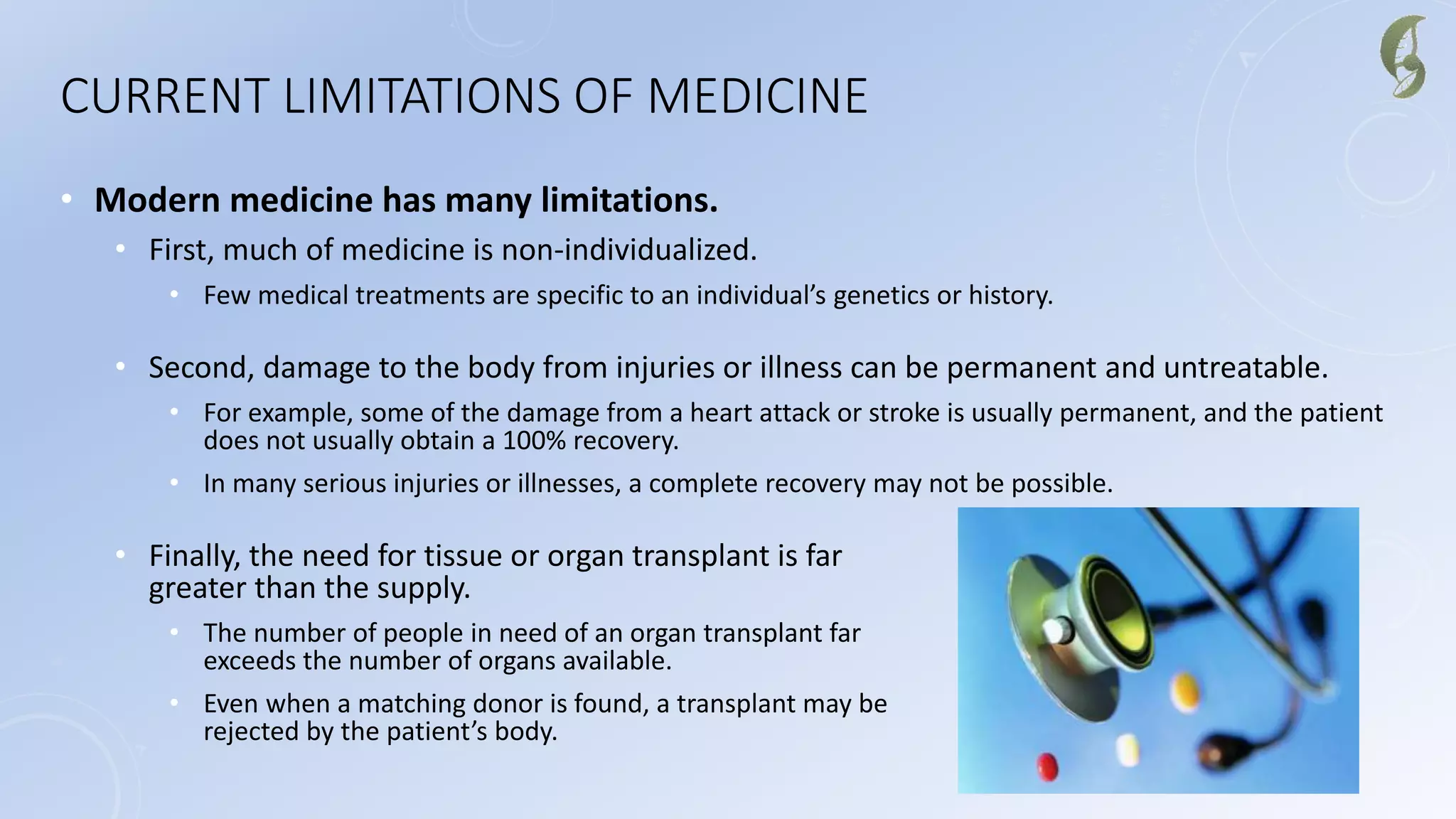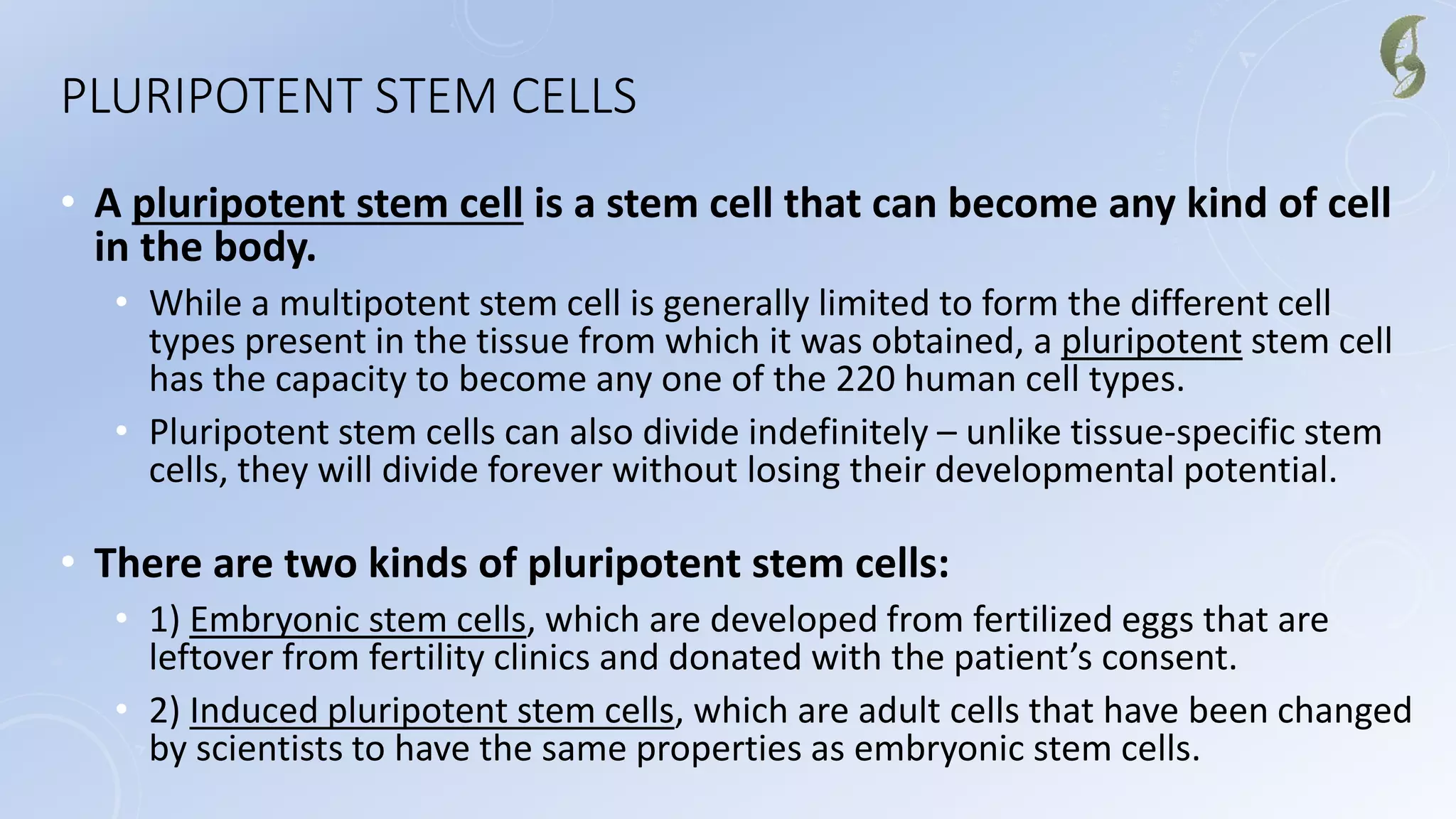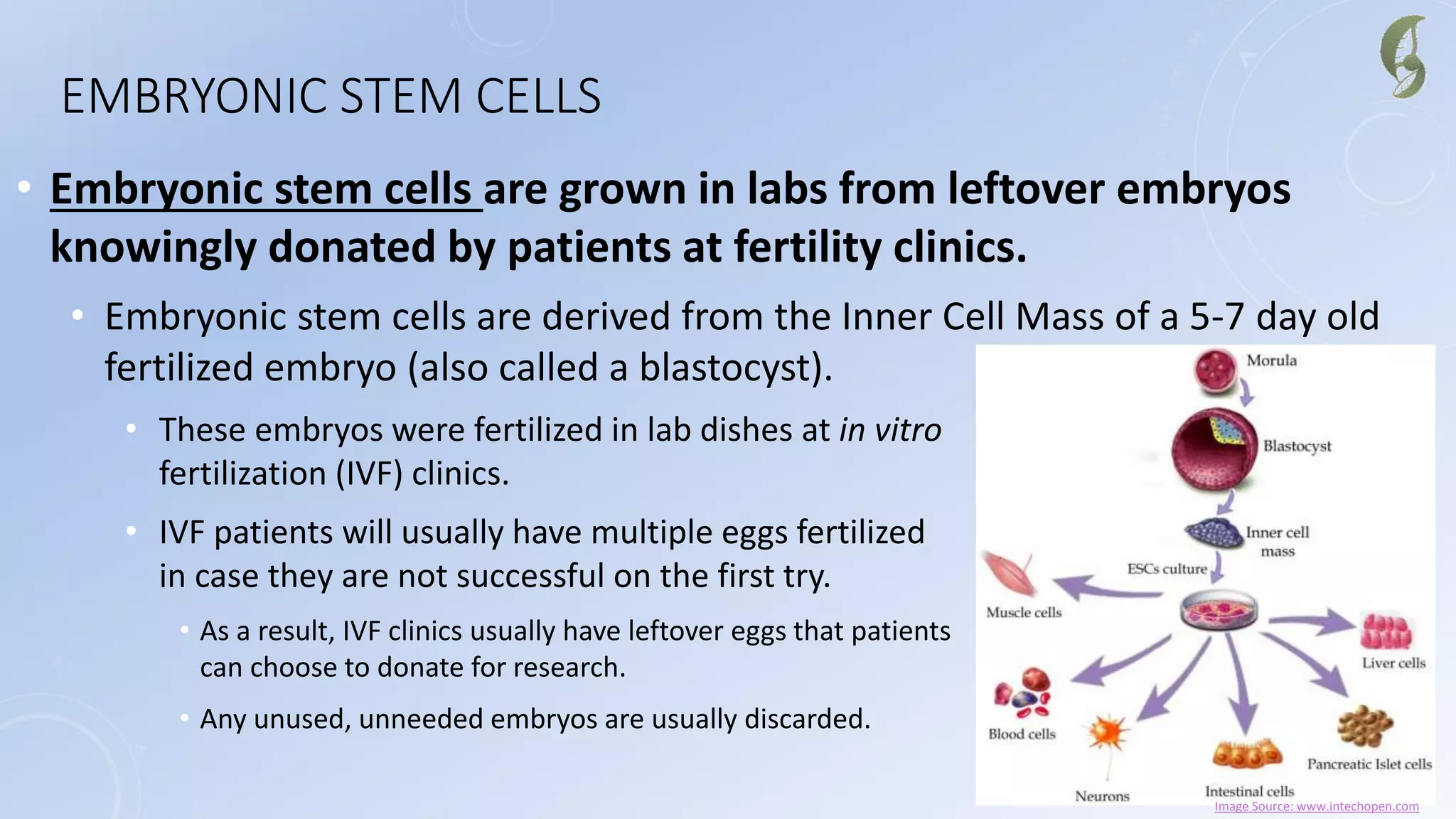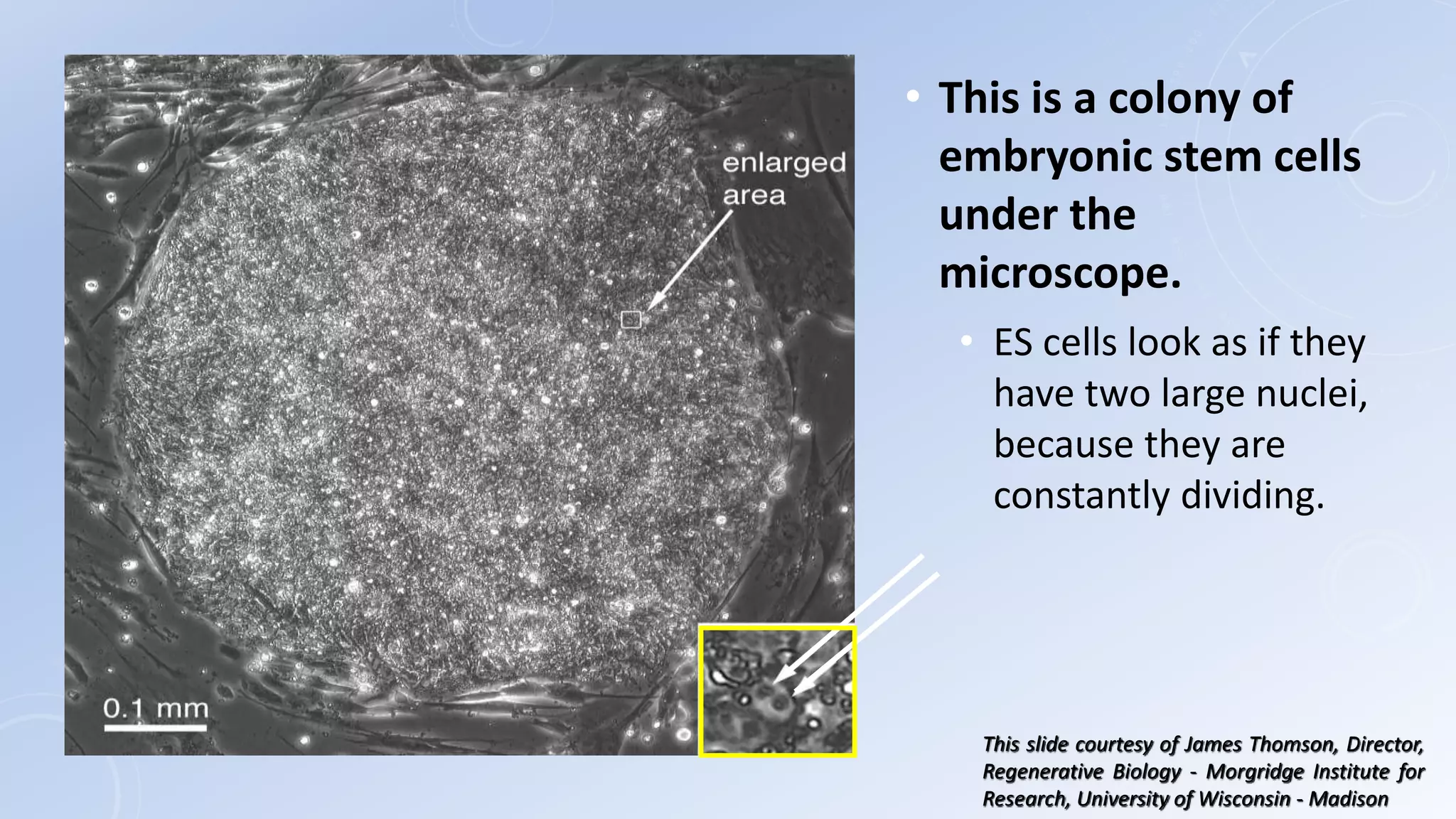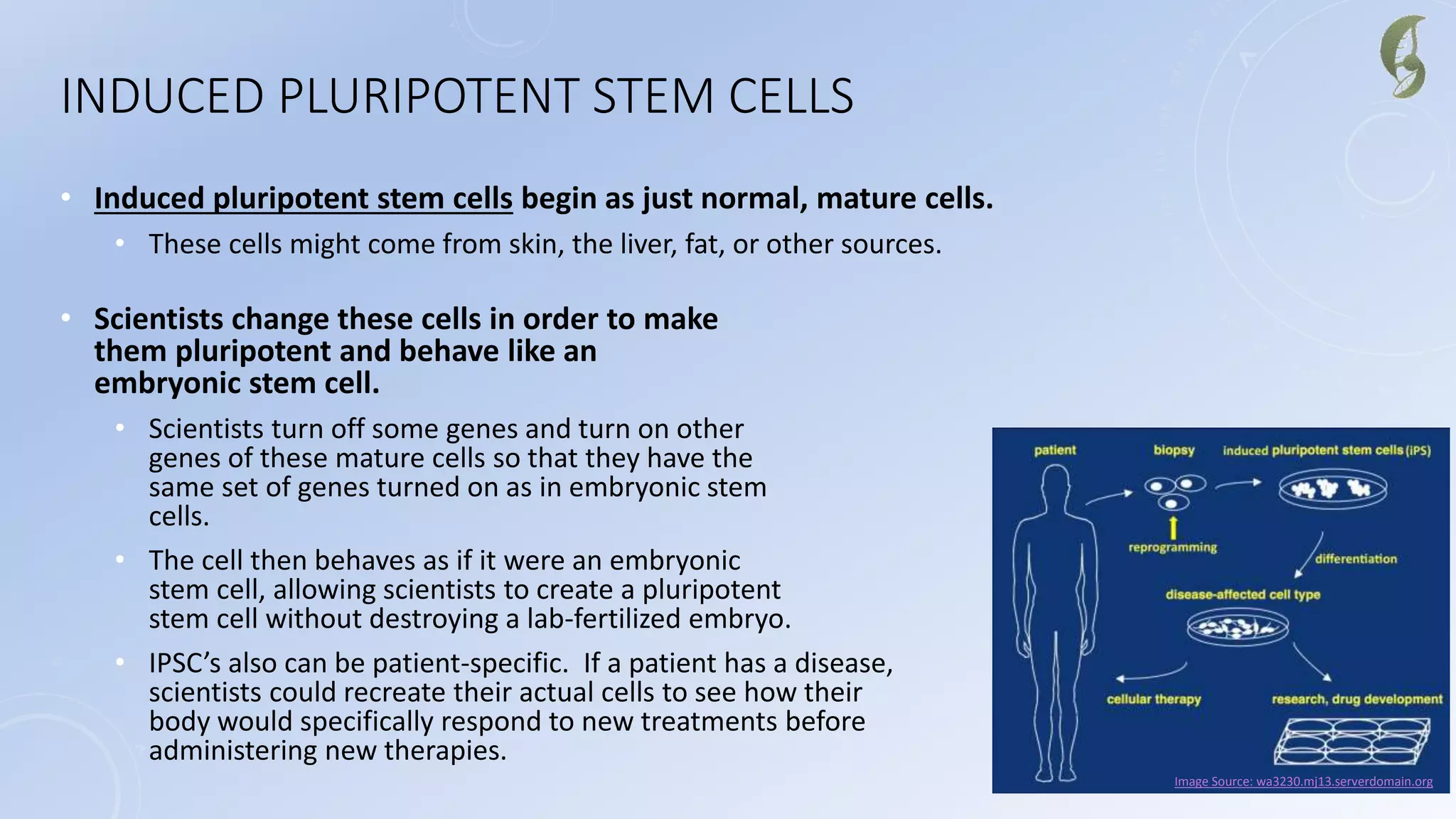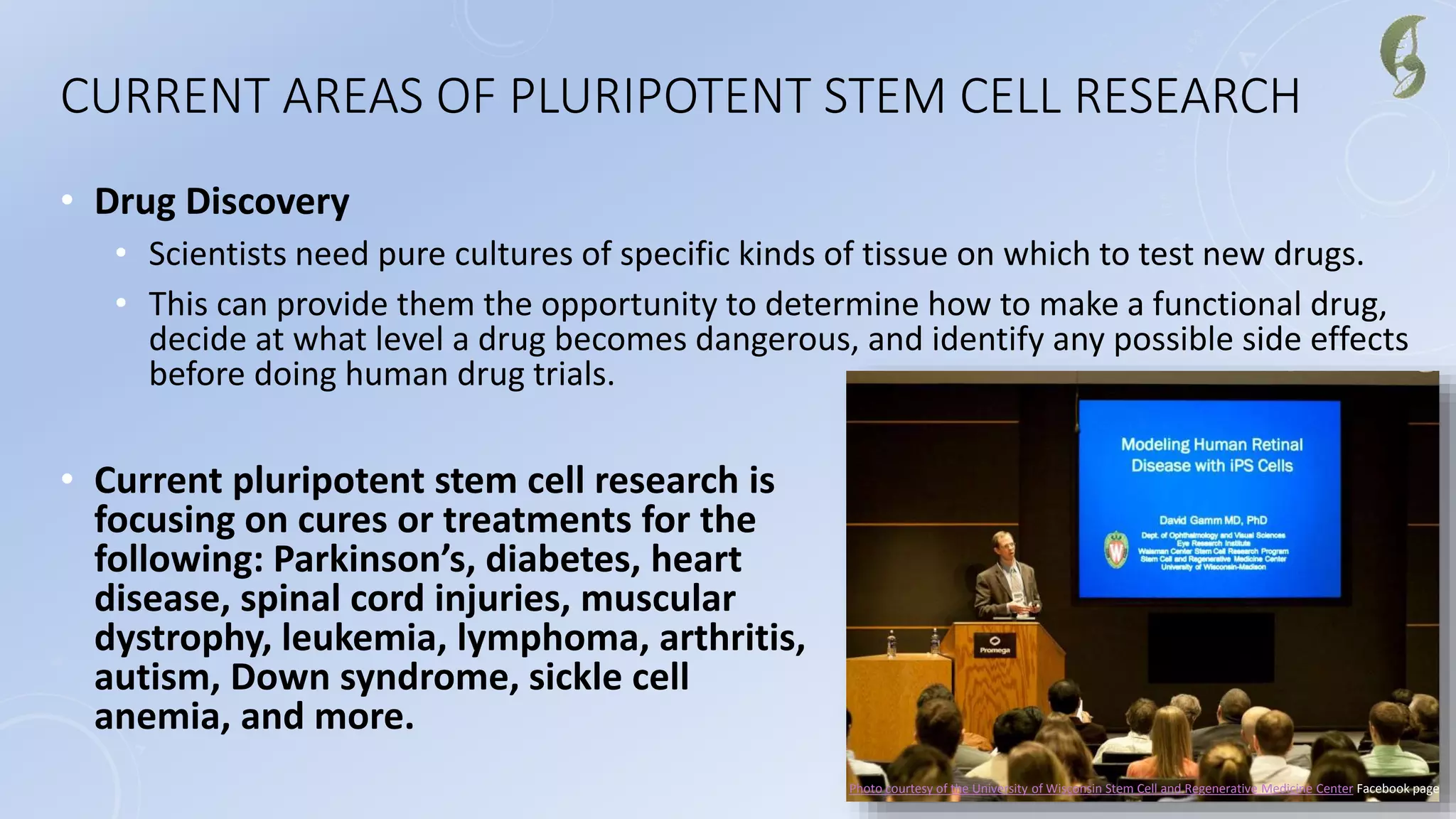The document discusses stem cells and their potential medical applications. It defines two main types of stem cells - tissue-specific stem cells which are multipotent and can only form certain cell types, and pluripotent stem cells (embryonic and induced pluripotent) which can form any cell type. Tissue-specific stem cells are found throughout the body and already used to treat conditions like leukemia. Pluripotent stem cells have greater potential but also more challenges, as embryonic stem cells require embryo destruction and induced pluripotent stem cells are difficult to create reliably. Overall stem cells may help develop more individualized regenerative and personalized medical treatments.

